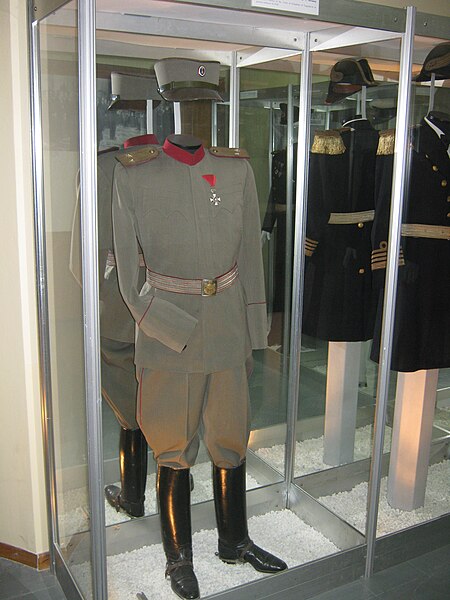4th Army (Kingdom of Yugoslavia)
The 4th Army was a Royal Yugoslav Army formation mobilised prior to the German-led Axis invasion of the Kingdom of Yugoslavia during World War II. It was drawn from the peacetime 4th Army District. When mobilised, it consisted of three divisions, a brigade-strength detachment, one horse cavalry regiment and one independent infantry regiment. It formed part of the 1st Army Group, and was responsible for defending a large section of the Yugoslav–Hungarian border, being deployed behind the Drava river between Varaždin and Slatina. Like all Yugoslav formations at the time, the 4th Army had serious deficiencies in both mobility and firepower.
Armijski đeneral Petar Nedeljković commanded the Yugoslav 4th Army during the Axis invasion of Yugoslavia
Escorted by Messerschmitt Bf 109E fighters, Junkers Ju 87 Stuka divebombers of StG 77 destroyed most of the 4th Army's air reconnaissance assets on the ground at Velika Gorica on 6 April 1941.
A damaged bridge over the Drava river with a German soldier in the foreground
Two batteries of Skoda 75 mm Model 1928 mountain guns were deployed in support of the counterattack by 27th ID on the Zákány bridgehead.
The Yugoslav Army, commonly the Royal Yugoslav Army, was the land warfare military service branch of the Kingdom of Yugoslavia. It existed from the Kingdom's formation in December 1918, until its surrender to the Axis powers on 17 April 1941. Aside from fighting along the Austrian border in 1919 and 1920 related to territorial disputes, and some border skirmishes on its southern borders in the 1920s, the JV was not involved in fighting until April 1941 when it was quickly overcome by the German-led invasion of Yugoslavia.
Yugoslav soldiers in 1925
Royal Yugoslav Army officers' uniform






